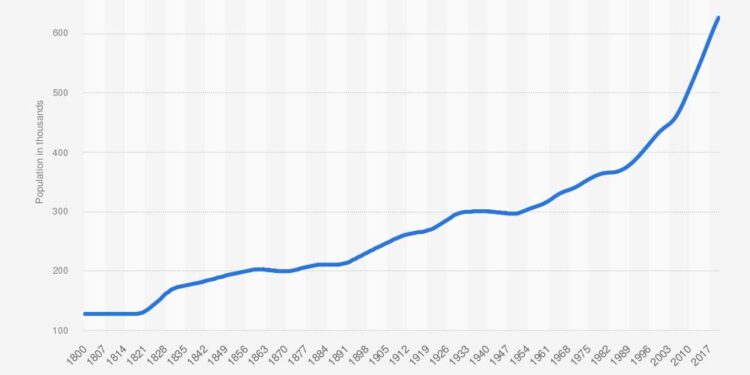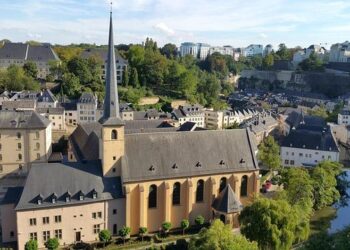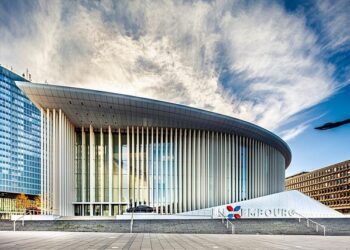Luxembourg continues to stand out in Europe not only for its economic prowess but also for its dynamic demographic profile. As one of the continent’s smallest yet most prosperous nations, Luxembourg’s population growth, migration trends, and ageing patterns reveal important insights into its social fabric and future challenges. This article delves into the latest data and expert analyses on Luxembourg’s population size, the impact of immigration, and the evolving age structure, offering a comprehensive overview of the factors shaping the Grand Duchy today.
Luxembourg’s Population Boom Drives Economic Growth and Social Change
Luxembourg has witnessed a remarkable surge in its population over the last decade, fueled largely by sustained migration and an appealing economic environment. This demographic expansion has not only bolstered the workforce but has also become a catalyst for unprecedented economic momentum. Multinational corporations and financial institutions have intensified their presence, capitalizing on the influx of skilled migrants, which in turn has spurred innovation, increased consumer demand, and elevated living standards. The government’s strategic policies aimed at integrating newcomers have fostered a vibrant multicultural society, enriching Luxembourg’s social fabric and enhancing its global competitiveness.
The population boom, however, brings challenges alongside opportunities, especially concerning ageing trends and infrastructure development. Despite a steady increase in younger residents, the proportion of elderly citizens is rising, necessitating adaptive healthcare and pension systems. Urban areas are experiencing rapid expansion, urging urban planners to balance growth with sustainability. Key demographic indicators highlight this dual dynamic:
| Indicator | 2015 | 2023 | Projected 2030 |
|---|---|---|---|
| Total Population (millions) | 0.56 | 0.68 | 0.75 |
| Median Age (years) | 39.2 | 40.7 | 42.5 |
| Net Migration (thousands) | 5.3 | 7.9 | 8.5 |
- Economic diversification: Increased workforce diversity stimulating new sectors.
- Social integration programs: Expansion of language and cultural initiatives.
- Infrastructure investments: Focus on sustainable housing and transport.
- Ageing support: Enhanced healthcare and pension reforms underway.
Migration Trends Reshape the Grand Duchy’s Demographic Landscape
Luxembourg has witnessed a remarkable shift in its demographic profile driven primarily by evolving migration patterns. Over the past decade, the country has transformed into a hub attracting a diverse array of international migrants, including professionals, seasonal workers, and asylum seekers. This influx has bolstered population growth at rates far exceeding those of many neighboring European countries. Notably, the capital city and its surrounding communes have become melting pots where multiple cultures and languages coexist, fostering a unique social dynamic and stimulating economic expansion. The nation’s openness to migration has also helped offset natural population decline caused by ageing and lower birth rates.
Key factors shaping these trends include:
- Economic opportunities: Robust job markets in finance, technology, and logistics continue to draw foreign talent.
- Multilingual policies: The country’s education and administrative systems accommodate multiple languages, easing integration for newcomers.
- EU membership perks: Free movement rights encourage internal migration from surrounding states.
Below is a snapshot of Luxembourg’s migration impact over recent years:
| Year | Net Migration | Population Growth (%) | Foreign-Born Residents (%) |
|---|---|---|---|
| 2018 | 8,500 | 2.2 | 43 |
| 2019 | 9,200 | 2.5 | 45 |
| 2020 | 7,000 | 1.8 | 46 |
| 2021 | 8,800 | 2.3 | 47 |
Addressing Ageing Challenges Through Policy Innovation and Community Support
Luxembourg has embraced a multi-faceted approach to tackle the complexities arising from an ageing population. Innovative policies focus not only on extending the working life but also on enhancing the quality of life for senior citizens. The government has implemented flexible retirement schemes, coupled with incentives for lifelong learning and re-skilling. These measures ensure that older adults remain active contributors to society, while also alleviating the pressure on the pension system.
Community-based support structures play a pivotal role in complementing state initiatives. Local organizations and municipalities are investing in social engagement programs tailored to foster intergenerational connections and combat loneliness among the elderly. Key strategies include:
- Establishing day centers offering health and recreational activities
- Promoting volunteer networks for home visits and assistance
- Developing accessible public transport to improve mobility
| Policy Innovation | Community Support |
|---|---|
| Flexible retirement age | Social clubs and day centers |
| Lifelong education programs | Volunteer home visit initiatives |
| Incentives for elder employment | Improved transport accessibility |
To Conclude
As Luxembourg continues to navigate the complexities of population growth, migration trends, and an ageing demographic, the nation faces both challenges and opportunities ahead. With its dynamic economy and diverse communities, understanding these demographic shifts is key to shaping sustainable policies for the future. Keeping a close eye on these factors will be essential as Luxembourg charts its course in the years to come.
















